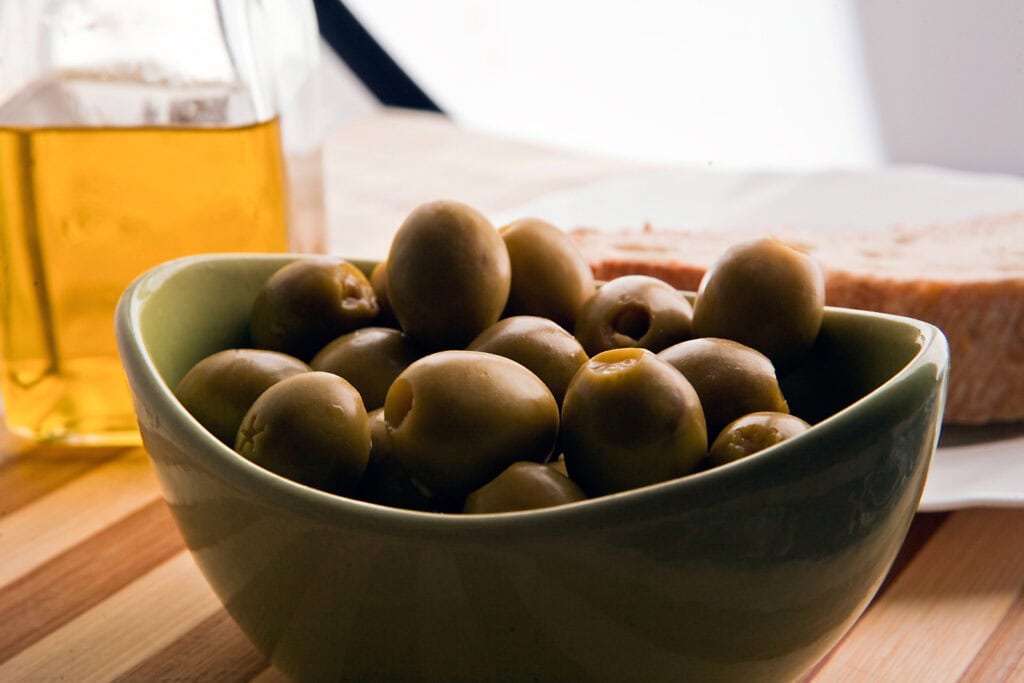Be Impressed… Get cold pressed!

Summary
- How cold-press olive oil differs from the regular variations of this kitchen staple
- The best culinary uses for this traditionally extracted finest oil
- Understanding the process of traditional and modern extraction techniques
Contents
- What is cold-pressed olive oil?
- The difference between cold-pressed olive oil, extra virgin, virgin and regular olive oils
- How is cold-pressed olive oil best used in recipes and dishes?
- Cold-pressed olive oil vs. Cold-extracted olive oil
What is cold-pressed olive oil?
Cold-pressed olive oil is a type of oil that is extracted using a mechanical process without the use of heat or chemicals. The term ‘cold-pressed’ refers to the fact that the oil is pressed at temperatures below 27°C (80°F). This method helps to preserve the oil’s natural flavour, aroma, and nutritional value.
Characteristics
Cold-pressed olive oil is rich in nutrients and retains more antioxidants, vitamins, and beneficial compounds compared to refined oils.
Free from chemicals and solvents often used in other extraction methods, it has a more robust flavour and aroma, often described as fruity or grassy, with a slight bitterness and peppery finish. It is typically rich green in colour, often with a golden hue, depending on the type of olives used.
The difference between cold-pressed olive oil and extra virgin, virgin and regular olive oils
- Cold-pressed olive oil is considered unrefined and is produced without the use of heat or chemicals, preserving the antioxidants
- Virgin olive oil is also made without heat or chemicals, but has some flavour flaws, so may not be as rich in antioxidants
- Extra virgin olive oil is unrefined and relies mainly on cold-press methods during extraction
- Regular olive oil is processed to be refined
- Cold-extracted olive oil is extracted at even lower temperatures using modern methods, may retain a higher nutrient content and has a fresher, lighter flavour
How is cold-pressed olive oil best used in recipes and dishes?
Culinary Uses:
- Salad Dressings: Ideal for vinaigrettes and dressings, adding a rich, fruity flavour.
- Drizzling: Great for drizzling over finished dishes such as vegetables, pasta, or grilled meats.
- Dipping: Commonly used as a dip for bread, often mixed with balsamic vinegar or herbs.
- Cooking: Suitable for low to medium-heat cooking, such as sautéing or baking, though its delicate flavour can be diminished at high temperatures.
- Marinades: Used in marinades to enhance the flavour of meats, fish, and vegetables.
Cold-pressed olive oil vs. Cold-extracted olive oil
Even though cold-press is a commonly used term to indicate high quality olive oils, it’s technically outdated.
There is a widespread understanding that ‘pressed’ oil is of the highest quality, when in reality, this process has been replaced by more technologically advanced methods that offer superior product quality, known as ‘cold-extraction’. Today, olive oils obtained through pressing are rarely commercially available mainly for hygiene and food safety concerns.
The traditional pressing process involved olives first being crushed in a stone mill, with the resulting olive paste being placed in presses consisting of a stack of mats. Finally, this stack was closed with a metal grid, and pressure was directly applied to it. By exerting this pressure, the olive paste released a liquid mixture of oil and vegetation water.
If the oil was obtained without heating the olive paste, it would be referred to as ‘cold pressed’ (the paste cannot exceed 81 ªF or 27°C).
Heating the olive paste would decrease its viscosity and this would facilitate oil extraction. However, the oil would also lose some of its aromas and organoleptic properties – that’s why cold-pressed has been associated with high quality olive oils.
The mixture was then collected into tanks where the oil would naturally separate from the water (decantation).
This process has been abandoned in modern production due to economic, quality and hygiene reasons. Technological advancements in olive mills and the use of centrifuges have allowed for the production of higher quality oils with superior properties compared to those obtained through pressing.
Why Choose Morocco Gold Extra Virgin Olive Oil?
Morocco Gold comes from a single source, from the Beni-Mellal region of Morocco. The olives are harvested by hand, early in the season whilst the fruit is still young and green. The olives are handled with care and attention throughout the harvesting and pressing process to ensure that only the best olives are used for Morocco Gold.
Uniquely, we include the results of our chemical analysis for acidity, peroxide and ultra-violet testing on each and every bottle of Morocco Gold so that our customers can see at a glance the guarantee of extra virgin olive oil quality.
Morocco Gold comes from the Picholine Marrocaine olive, which is characterised by its green, fruity flavour, with hints of almond and herbs, also its high level of polyphenols that give Morocco Gold its health enhancing qualities as well as it’s taste.
It does not have the ‘aggressive’ pungency of some extra virgin olive oils, giving Morocco Gold a well-balanced and satisfying finish. This also makes Morocco Gold highly versatile in how it can be used, either taken directly, dipping with bread, drizzling over salads, sautéing vegetables, the uses are limitless.
Have We Helped You Pick The Best Olive Oil For You?
So, what is the best olive oil for you? It depends on your needs and preferences. If you’re looking for a versatile oil that can be used in both cooking and salads, an all-purpose olive oil would be a good choice. If you want an oil with a milder flavour that’s great for dipping bread or using in dressings, then go with an extra virgin olive oil. No matter which type of olive oil you choose, you can enjoy the many health benefits they offer.
